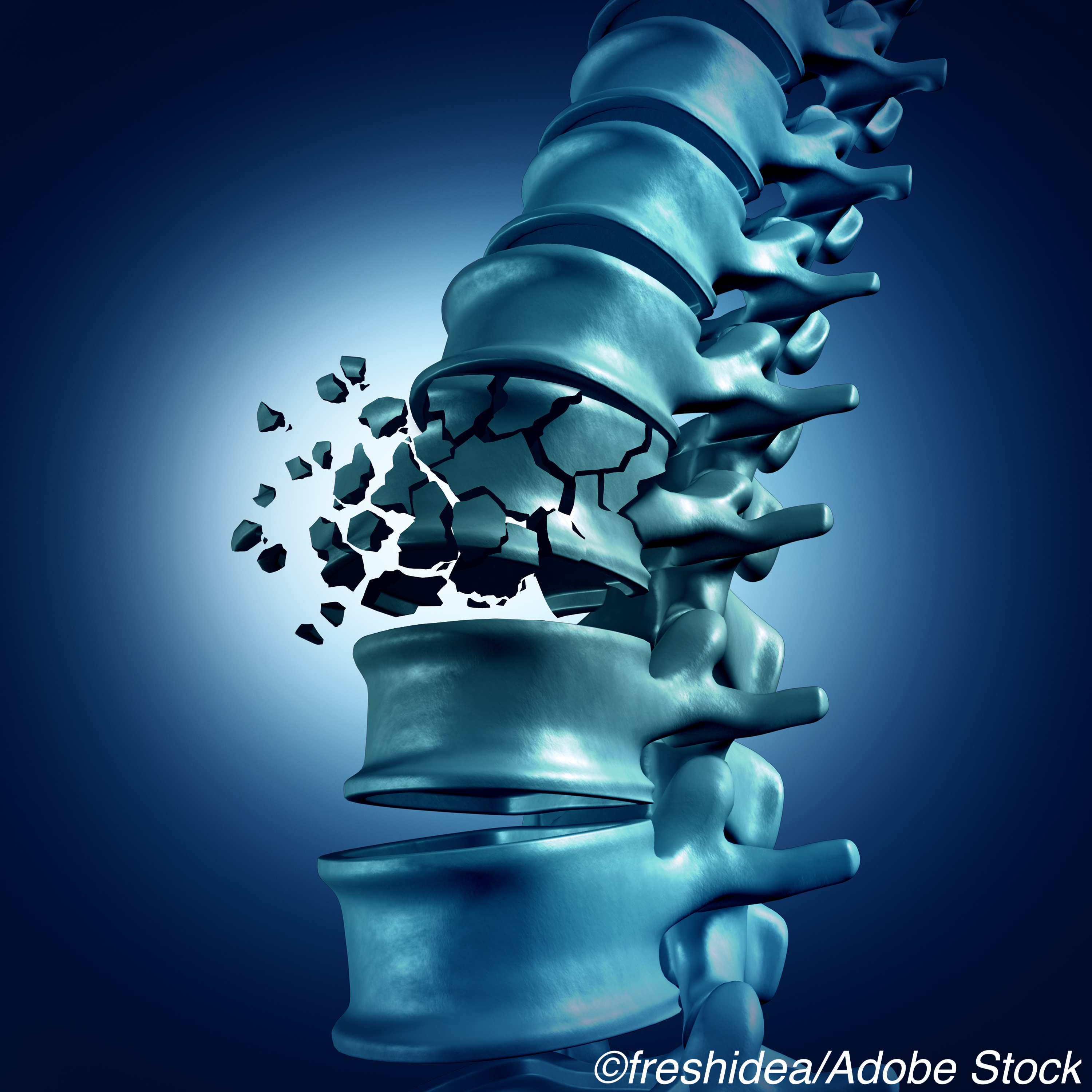
Vertebral fractures occur frequently in older adults, with incident rates of 5.2 to 9.3 per 1000 person-years in men and 7.8 to 19.6 per 1000 person-years in women for European patients older than 55 years. And, as Kota Fujii, MD, Department of Radiation Oncology and Image-Applied Therapy, Kyoto University Graduate School of Medicine, Kyoto, Japan, and colleagues explained in JAMA Network Open, these kinds of fractures not only impair patent activity and quality of life, they increase mortality as well.
There have been reports of an association between radiotherapy and vertebral fractures; however, according to the authors of this study, those reports didn’t assess the association of radiotherapy with thoracic vertebral fractures.
Esophageal squamous cell carcinoma emerges from the thoracic esophagus and can be treated through endoscopic treatment, surgery, or CRT. Thus, in this study, Fujii and colleagues compared the incidence rate of a vertebral fracture at 36 months in patients with thoracic esophageal cancer treated by CRT (with 3-dimensional conformal radiotherapy) with that of endoscopic treatment or surgery.
The retrospective cohort study included 315 patients (median age 65) with stages I to III thoracic esophageal cancer, 119 of whom underwent CRT and 196 of whom received endoscopic treatment or surgery.
Of the 119 patients in the CRT group, 20 developed thoracic vertebral fractures (16.8%), compared with 8 patients in the non-CRT group (4.1%). The 36-month incidence rate of thoracic vertebral fractures was 12.3% (95% CI, 7.0%-19.1%) in the CRT group compared to 3.5% (95% CI, 1.3%-7.5%) in the non-CRT group (hazard ratio [HR], 3.41 [95% CI, 1.50-7.73].
Multivariable analysis showed CRT was associated with thoracic vertebral fracture after adjusting for age (HR 3.91 [95% CI, 1.66-9.23]), sex (HR 3.14 [95% CI, 1.37-7.19]), and history of vertebral or hip fractures (HR 3.10 [95% CI, 1.33-7.24]).
The cumulative incidence rate of 12.3% for vertebral fracture after 3 years indicates that vertebral fracture after CRT for thoracic esophageal cancer is not rare, the authors pointed out. “Clinicians need to be reminded that a thoracic vertebral fracture is not a rare adverse event after CRT for this population,” they wrote.
Fujii and colleagues also determined that the hazard ratio of thoracic vertebral fracture for a 5-Gy increase in the mean radiation dose to a single vertebra was 1.19 (95% CI, 1.04-1.36), and 0.88 (95% CI, 0.84-0.93) in a 5-U increase of mean HU, suggesting there is a correlation between thoracic vertebral radiation dose and the incidence of a thoracic vertebral fracture in patients treated with CRT.
“The incidence of thoracic vertebral fracture after CRT for esophageal cancer may decrease if the vertebral dose is reduced using the advanced radiotherapy techniques,” the authors concluded.
In a commentary accompanying the study, Cristina DeCesaris, MD, and Avani D. Rao, MD, both of the Department of Radiation Oncology, University of Maryland Marlene and Stewart Greenebaum Cancer Center, Baltimore, noted that there are several limitations to the study.
For example, Fujii and colleagues did not report comparisons between baseline characteristics in the two groups. However, a comparison of bone density in both the CRT and non-CRT cohorts is important in this kind of study, wrote DeCesaris and Rao. They also pointed out that the patients in the study were treated between 2007 and 2013, and that the use of advanced radiation modalities — such as intensity-modulated radiation therapy and proton therapy — in patients with esophageal cancer results in decreased prescription doses and increased conformality of radiation, and would likely reduce the risk of vertebral fracture risk in patients who are currently receiving CRT.
Despite these limitations, however, DeCesaris and Rao concluded that the study contributes to a body of literature “describing a consistent rate of VBFs after receipt of CRT and continues to draw the attention of radiation oncologists to minimize the vertebral body radiation dose and to monitor bone density and health throughout follow-up and survivorship clinics.”
-
Chemoradiotherapy (CRT) is associated with thoracic vertebral fractures in esophageal cancer patients, according to findings from a Japanese retrospective cohort study.
-
The use of advanced radiotherapy techniques, or reduced radiation dosing, could possibly reduce the incidence of thoracic vertebral fracture in patients undergoing CRT for esophageal cancer.
Michael Bassett, Contributing Writer, BreakingMED™
The study authors had no relevant relationships to disclose.
Cat ID: 116
Topic ID: 78,116,730,116,935,192,925


